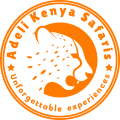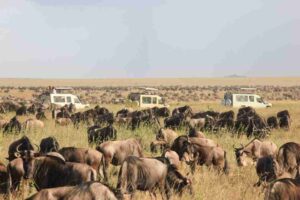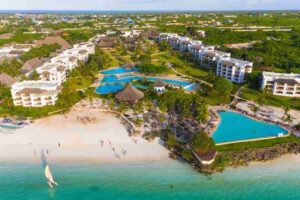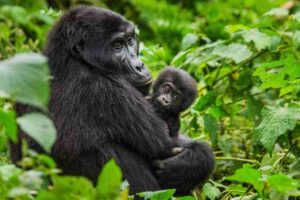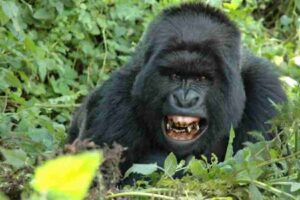| Name of the facility | Basecamp Maasai Mara |
|---|---|
| Certification Achieved | Gold |
| Year opened | 1998 |
| Tourism region | Masai Mara/South Rift |
| County | Narok |
| Address | Koiyaki Group Ranch Map It |
| Telephone/Mobile | +254 733 333909 |
| [email protected] | |
| Website | basecampexplorer.com |
| Facility Notes | Basecamp Masai Mara is situated in Koiyaki Group Ranch, adjacent to Masai Mara National Reserve, approximately two (2) kilometres from Talek gate along Talek River. The camp, established in 1998, has 12 guest tents and 48 permanent staff members for its operations and it is open throughout the year. It lies on six (6) hectares of land next to the Reserve, an integral part of the Mara-Serengeti ecosystem, which provides critical wildlife dispersal area for migratory wildlife. The Mara portion of the larger Mara Serengeti ecosystem supports approximately 92 species of mammals and about 400 species of local birds. |
| Energy management | Solar is the main source of energy for the camp. There are 31 solar panels fixed with power inverter battery system which provide power for lighting, and electrical appliances. The energy is supplemented by a backup generator with an output capacity of 15 KvA. The facility has installed five (5) solar water heaters each with a capacity of 400 litres. They are linked to four (4) back-up kuni boilers which use charcoal briquettes. Liquefied Petroleum Gas (LPG) is used for guest cooking while energy saving stoves – jikos is used at staff quarters. The staff is sensitized on energy conservation through departmental briefings whereas visitors are sensitized on arrival briefings. Also, guest tents are fitted with room information sensitizing visitors on energy conservation. The guest tents are fixed with main switches and the night guards are sensitized to switch off unnecessary lights. Also, Energy saving bulbs is installed throughout for energy conservation |
| Environmental management | The facility is designed to have low impact to the environment with the guest tents built using canvas tents raised on wooden platforms. The interior and exterior designs are further moulded from clay, deadwood and grass thatch roofing. The tents are purposely designed to have relative impact to the natural surroundings. Natural vegetation has been left intact. The facility is also partly unfenced which allows wildlife to move within the premises. |
| Chemical use | The facility uses biodegradable cleaning products for general cleaning purposes and for laundry. Diesel is stored in three (3) tanks with a capacity of 2,500 litres each. The storage area is well contained and secured to prevent spillage. |
| Conservation Criteria | |
| Community Criteria | |
| Solid waste management | Waste separation is done at source and the waste bins are clearly labelled. The waste is later put in a waste collection center for further segregation before disposal via Basecamp Nairobi offices for recycling. Organic waste is composted in a four chamber composting system. The manure is later is later used to plant tree seedling within the camp. Ash is added to reduce odour and the chambers are tightly secured to keep off wildlife scavengers |
| Water management | Main source of water for the facility is a borehole located within the facility. The water is solar pumped to a high elevation and stored in three main reservoirs with a total capacity of 25,000 liters for distribution throughout the camp. The water is metered at source and recorded on monthly basis for monitoring purposes. Harvesting of rain water is done and contained in a 50,000 litre underground water tank. The camp sensitizes its staff during daily meetings and guests during arrival briefings on water conservation. The guest tents are fixed with dual flush toilet cisterns to reduce on water consumed per flush. Guests are also encouraged to re-use their towels and linen through information sheets available in guest tents |
| Visitor communication & education | Visitors are briefed upon arrival and the camp has a designate reading resource lounge with information about Basecamp Foundation, and Masai Mara ecosystem. Magazines on mammals, birds and Masai people are available as well. |
| Pollution | Low light emitting paraffin Lanterns are used to light the pathways at night which greatly reduces light pollution while the generator has a sound proof body to reduce on the noise pollution. |
| Environmental conservation | The camp is designed to blend in with the natural environment: canvas tents are of natural colours beige and green, raised on wooden platforms with walls made from deadwood. Footpaths are made sand and gravel to demarcate the way. The facility is also unfenced which allows wildlife to move freely. The facility conducts low environmental impact activities such as nature walks, bird watching and offers authentic village visits .The activities are aimed at sensitizing the visitors on the surroundings. The facility has an indigenous tree seedling nursery, and a tree planting program. Since inception, approximately 70,000 seedlings have been planted with a success rate of 80%. |
| Waste water management | Waste water from the kitchen flows through a three chamber grease trap to filter fats and oils and drains into a waste water treatment system within the facility. The grease trap is cleaned twice a month. Waste water from the laundry and staff quarters is managed through the waste water treatment system. Black water from the guest tents is collected in seven (7) septic tanks for sludge digestion. The effluent is later pumped into an underground waste water treatment system fixed with radial arms. The system is fixed with access maintenance manholes. Black effluent from the staff quarters is managed through pit latrines. The camp has four (4) latrines specifically for use by staff |
| Purchasing and supplies | Purchasing of supplies such as rice, flour and sugar is done in bulk to reduce on packaging material. Vegetables are stored in re-usable crates and meat in coolers |
| Employment and remuneration/staff welfare | The facility has a staff welfare committee that meets regularly to deal with staff issues with the management. |
| Staff education, communication and awareness training | The camp has a scheduled in house training per department both on skills development, conservation issues and, health and safety. |
| Cultural preservation and promotion/protection of local sites | Guests are offered an authentic cultural experience at the nearby local villages. Specified percentage of village visits contribution is directed to community projects and support to a local women group. |
| Benefits to local community/community empowerment | Basecamp makes remittances on conservancy, lease and bed night fees to Naboisho Conservancy where some of the funds are used for local community wellbeing projects and initiatives. The camp purchases locally where possible, this include meat for staff, and fruits and vegetables at the local market. The camp has a comprehensive community engagement plan implemented through the Basecamp Foundation. The initiatives range from education, health, conservation and community empowerment. Community empowerment: BCF established and supports the Masai Brand Project, which a project aimed at empowering local women through beadwork and recycled plastic material products. The project is hosted at the camp where groups of local women do the production of beaded products on rotational basis. Currently 118 women benefit from this project. The foundation has also set up an online marketing platform for the project-maasaibrand.com; 75% proceeds go back to the women group and the rest is used to run the project. |
| Cultural Criteria | |
| Health and safety | The camp has been inspected by the County Public Health office and given a Health Clearance certificate. The facility has undertaken a fire safety audit dated June 2014 to comply with Factories and other places of work (Fire Risk Reduction) Rules 2007.The facility has conducted a Health and Safety Audit dated June 2014 in compliance with Occupational Safety and Health Act, 2007. In addition, the camp has a number of trained staff on first aid skills and first aid kits available at key areas within the camp. Food handlers have undergone medical tests dated June 2014 in compliance with Food, Drugs, and Chemical substances Act. Cap 254.Guest tents are equipped with fire evacuation plan facility plan and emergency response whistle. Firefighting equipment which includes fire extinguishers, kitchen fire blankets and sand buckets are serviced and strategically placed within the facility. |
| Child labor, abuse and human rights | The facility does not employ any person below the legal working age of 18 years. |
| Business Practises Criteria | |
| Entry Date | 13th March 2018 |
Basecamp Maasai Mara
Book best Africa Luxury Safaris in Kenya & East Africa explore best wildlife parks,, wildebeest migration, big five, big cats, cultures, beaches & natural wonders
Table of Contents
Why Go with Adeli Kenya Safaris
- Born, raised & based in Africa. Let u show you the Africa we know well and cherish so much
- Africa sustainable travel is our passion
- Great Value for Money. Best price guaranteed
- Experienced team of travel experts
- Knowledgeable & multi-lingual safari guides
- Safety conscious
- Fleet of well maintained vehicles
Your dream safari / holiday is just a call or email away. Contact Adeli Kenya Safaris today. Tel: +254720564538 | WhatsApp: +254720564538 | Email: [email protected]
